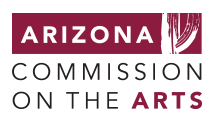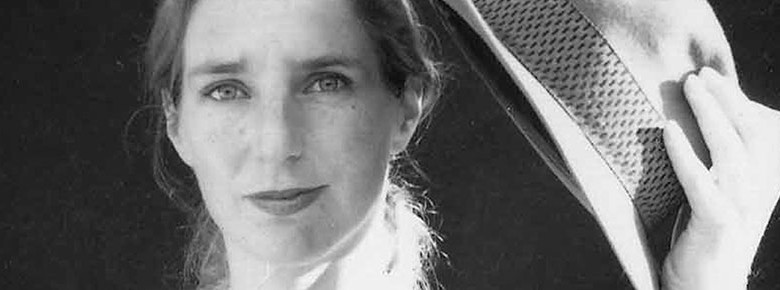Perspectives is an on ongoing series of interviews and check-ins with recipients of our Artist Research and Development Grant (ARDG). Today we speak with 2015 ARDG recipient Susan Bendix of Tempe.
Susan Bendix is a professional dancer, choreographer, improvisational artist, and Zen practitioner who has danced both nationally and internationally, worked as an artist with Arizona Commission on the Arts, the Phoenix Office of Arts and Culture and as a Wolf Trap artist in early childhood education. Her dance focus includes concentrated work in Action Theater improvisation, theater, technology and site specific choreography. She works with a broad range of populations including incarcerated youth, gifted youth, university students, public health entities and those in the corporate sector.
Dr. Bendix has a Ph.D. in Education, an MFA in dance and choreography from Arizona State University, and received her BA from the University of California, Riverside. She participated in the launch of the New York based SMALLLab (Situated Multimedia Arts Learning Lab), an embodied learning environment developed by a collaborative team of researchers and K-12 teachers. She taught classes for the Mary Lou Fulton College of Education at Arizona State University and helped develop their arts-based teacher training track. Her pioneering dance curriculum has been honored with the 2011 Outstanding Narrative Dissertation Award conferred by the American Educational Research Association.
In January 2015, Dr. Bendix was awarded an Artist Research and Development Grant from the Arizona Commission on the Arts in support of the development of a movement-based curriculum for use with people experiencing grief or loss.
As she prepares to introduce this new programmatic tool to the staff of Hospice of the Valley through ‘train-the-trainers’ workshops, Dr. Bendix spoke with us about her process, her personal experiences of grief and loss, and exploring the physicality of emotion.
What originally drew you to dance?
I saw my first modern dance concert in high school, and experienced an unequivocal sense of recognition. I always danced in my own way, but observing that performance spurred me into formal training. As an undergraduate I majored in dance where the training included basic modern dance classes, ballet, choreography, improvisation and repertory.
And after a time, you were drawn back into the classroom?
It was accidental. I’d been recently widowed, was therefore financially strained, and I had a young child– the most expedient way to make a living on my own was to get a teaching certificate. I wound up directing a dance program at an inner city magnet arts school for a long time. Because of my circumstances, that’s where I landed, but since I’ve always been a creative person, that creativity was simply redirected into my work with students from underserved urban areas.
What kinds of movement or content did you explore with these students?
There’s a standard pedagogy in classical dance. I went in fully intending to take that approach. I quickly learned that would not be the way to elicit artistic expression and authentic material from these students; we couldn’t operate in the kind of a power structure inherent in classical dance’s traditional pedagogy. I had to develop a relationship, earn their trust and adapt to who they were. As an instructor, trying to steer these students through experiences of physical expression without knowing them would have been impossible. I had to be open. I didn’t teach ballet, didn’t teach modern dance. Instead, there was a lot of work through imagery, a lot of stuff we cooked up on the fly.
Working with these students was wonderful, but there was pain and struggle as well. These were students in extreme poverty, dealing with a lot of stress and emotional intensity. That struggle needs to be represented, too.
A lot of the work I’m developing, a lot of the seeds of this work, started there.
And you’re currently working on developing a dance curriculum specifically geared towards helping people move through grief and trauma experiences?
Approaching grief through movement has been happening for centuries. In times past, there was more of an instinctual understanding that through ritual, through movement, you could deal with emotional burden. The body enables you to bypass the limits of cognition, which are quite narrow, and quite confining. Cognition is fabulous and thinking with great analytical acuity is swell– I don’t mean to minimize it in any way– but it has become overly revered, pulling the mind body relationship out of balance.
We have a complicated relationship with our bodies, culturally. Bodies were considered “sites of sin”, and I think there are still vestiges of that. We’re distanced from the body in a way, but if you think about how we talk about grief and loss it is still very, very rooted in the physical. People will say, “it feels like I got hit in the gut”, or, “like I got run over by a truck”, or, “I got my legs knocked out from under me”, or, “I felt numb/raw”. Those’re all expressions rooted in physicality, and from my own experience with grief, I feel it does have such a strong physical presence. I remember feeling a little bit inhabited, like, by a beast. It’s as though grief is its own entity; your appetite is disturbed, your sleep is disturbed, you’re swirling. Grief takes up residence in the body. The whole mind/body connection is right in your face. The notion that they’re separate is problematic. We, as human beings are sensory creatures. It’s how we connect with our environment.
Grief and deep emotional material is not logic-based. It’s somewhere else, somewhere more primitive and instinctual. Dance and movement enables you to experience and process things in deep and metaphoric ways. By focusing on the body and its language of movement, we direct awareness to the senses and sensation, to gesture, emotion and thought in concrete expressive ways.
What are some of the particulars of the curriculum?
Let’s say we’re working with anger. Participants would be asked to explore anger (or any emotion) metaphorically. This begins with writing and moves into physicality. For example they would respond to prompts such as, where does the feeling enter your body? Does it go through your eyes, your belly or your fingers? Does it push through the pores of your skin? What form does it take inside your body? Where do your feelings live in your body, and what is the line density and shape of their energy? Are they loopy or jagged, wispy, thick? Are they layered, complex, multidimensional? Do they change form or move around? What’s the tempo? How do they travel? What’s the texture of your feelings? They then explore gestures that capture those feelings. There is also an exploration of open and closed shapes, the idea of expansion and contraction and how these (and other) emotional polarities are experienced in the body. All of these exercises explore the physicality of emotion. Participants finish with a small, carefully-guided, choreographic piece, with both spoken word and gesture. Participants also create rituals and work deeply with ideas of centering and breath.
Where are you intending for this program to be used?
I would hope that this movement-based methodology for dealing with grief could be used by Hospice workers. But I’m not limited to Hospice facilities.
This month (August), I’m going to start Hospice’s training, at their center for grieving children. Afterwards, I’ll be coming in to share my curriculum with their staff. They’ll be able to give me very helpful, salient feedback on the curriculum, and we can begin a conversation about its possible implementation.
Because you personally know the benefits of this methodology?
Grief is intense. I’m a dancer, so movement is my language. It was my way of being with that intense energy and just pouring myself into it. That’s what dance was like for me as a young person. It was how I processed the loss of a parent, and again, after my husband died. Dance is my mode, movement is my vocabulary.
For more information about Susan Bendix and her work, click here.
For more information on Artist Research and Development Grants, including eligibility requirements and application guidelines, click here.
More Perspectives

Perspectives: Danielle Foushée
Perspectives is an on ongoing series of interviews and check-ins with recipients of our Artist Research and Development Grant (ARDG). Recently, we spoke with Phoenix-based public artist Danielle Foushée about "Invitation," a piece installed at the entrance to Tempe Beach Park in October 2017.
Read more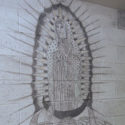
Perspectives: Thomas Eldridge
"There is a kind of spirituality I find inside Madison. Since the first time I laid eyes on one of the murals, I feel that I've been chosen to tell its story. It's like a voice, one that I must serve.... Inside Madison will be a testament to the confined human spirit in all of its anger, confusion, hope... and beauty."
Read more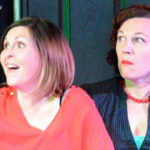
Perspectives: Amy Carpenter and Stacey Reed Hanlon
Perspectives is an on ongoing series of interviews and check-ins with recipients of our Artist Research and Development Grant (ARDG). Today we speak with 2017 ARDG recipient Amy Carpenter and her creative partner Stacey Reed Hanlon.
Read more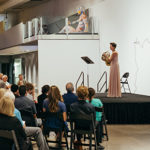
Perspectives: Johanna Lundy
Perspectives is an on ongoing series of interviews and check-ins with recipients of our Artist Research and Development Grant (ARDG). Today we speak with 2017 ARDG recipient Johanna Lundy of Tucson.
Read more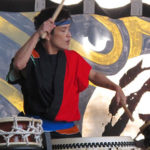
Perspectives: Karen Falkenstrom
Perspectives is an on ongoing series of interviews and check-ins with recipients of our Artist Research and Development Grant (ARDG). Today we speak with 2015 ARDG recipient Karen Falkenstrom of Tucson.
Read more
